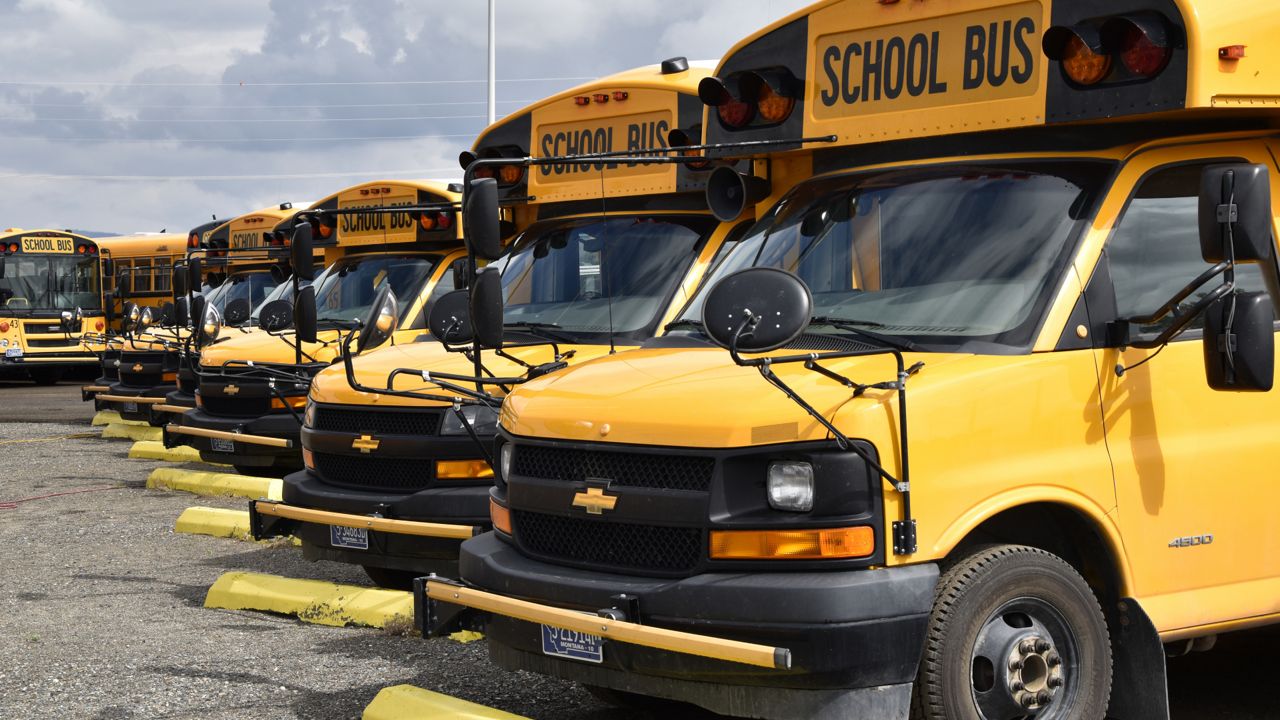The Department of Education released updated guidance on how school districts can use funds from multiple coronavirus relief packages passed over the course of the pandemic, saying the money can help address the ongoing bus driver shortage plaguing many schools across the nation.
The document, which is not legally binding, aims to “provide clarity to the public regarding existing requirements under the law or agency policies,” the department said in a document published Friday.
The Department of Education clarified that many costs associated with school transportation can be covered by Elementary and Secondary School Emergency Relief (ESSER) funds and Governor’s Emergency Education Relief (GEER) funds.
Billions of dollars have been released to state and local agencies for the purpose of addressing “the impact that COVID-19 has had, and continues to have, on elementary and secondary schools across the Nation.” ESSER grants went to state educational agencies for distribution, while GEER grants were awarded to governors’ offices.
Congress first allocated $13.2 billion in ESSER grants from the Coronavirus Aid Relief and Economic Security (CARES) Act last March; another $54.3 billion was allocated to ESSER II funds under the December Coronavirus Response and Relief Supplemental Appropriations Act, 2021 (CRRSA), with a subsequent $122 billion from this year’s American Rescue Plan (ARP) towards ARP ESSER grants.
The money from the ARP was specifically designed to “help safely reopen and sustain the safe operation of schools and address the impact of the coronavirus pandemic on the Nation’s students.”
Schools may use ESSER and GEER funds to transport students to and from school as long as the need “is related to COVID-19” and provided the cost is “reasonable and necessary”; the funds can also be used to drive students to and from after-school enrichment and education activities.
Moreover, schools can use the funds for “retention bonuses for current bus drivers, for salary increases, or for the cost of hiring additional bus drivers to address the shortage of bus drivers due to the pandemic.”
A nationwide school bus driver shortage further strained the start of a school year already struggling to accommodate an increasingly political debate over mask mandates and vaccination policies, coupled with a surge in highly contagious cases of the delta variant as many children returned to in-person learning for the first time in a year.
The driver shortfall wasn’t new, as the industry has faced staffing problems for years. The average age for bus drivers pre-pandemic ranged between 52-56, an aging group becoming only more susceptible to the virus, some of whom might be unwilling to return to a frontline profession with an average national pay of $34,670 as of 2020.
But those problems were exacerbated by the pandemic, and forced schools to implement creative solutions to address the shortage.
In September, nearly 300 National Guard members drove students to school in Massachusetts. In Maryland, driver’s tests and license renewals were expedited for school bus drivers. And a New Jersey school district offered some parents a $1,000 flat rate to drive their own kids to school this semester.
Many of these temporary solutions can be funded by ESSER and GEER grants, the Department of Education said Friday.
Parents and guardians can be reimbursed for transportation costs if they are forced to drive their children to school due to a driver shortage, under certain conditions.
Before compensating individuals, schools must develop a clear plan that takes into account the amount of transportation provided, documentation of travel costs to ensure funds are not spent erroneously, in addition to other factors.
Friday’s release adds on to the previous guidance from May 2021. The 61-page document outlined how GEER and ESSER funds could be used at a time when many schools were either ending their spring semester or still participating in virtual learning, meaning the need for transportation was not yet as dire as it would become in the fall.
Still, the previous guidance said the funds could be used for “transportation services to ensure access to after-school or summer learning and enrichment programs,” and also focused heavily on providing transportation and meals for migrant students and those who were learning English as a second language.



